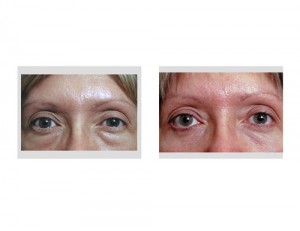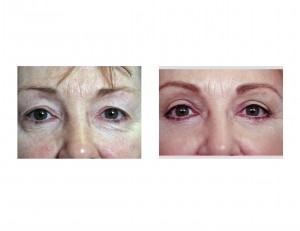One of the very common aging questions that I receive is about undesired changes on the lower eyelid and cheek area. Whether it is dark circles under the eyes, lower eyelid bags, tear troughs or wrinkles, these eyelid problems can make one look tired. Not only do they see it but other people frequently comment on it, furthering their concern about its appearance. People understandably seek a simple solution and hope some over-the-counter cream will make a significant improvement. Given the many creams that are touted and advertised for these aging eyelid problems, they are easy fodder for a sale whose benefit is largely to the manufacturer.
The tear trough lower eyelid problem is one that absolutely will not be changed by any cream or topical therapy.. This lower eyelid indentation or depression runs from the inner aspect of the lower eyelid down along and over the lower edge of the eye socket. It usually causes a shadowing effect and appears darker than the skin above and below it. When the lower eyelid fat is protruding or herniated above it, the tear trough looks even worse. (deeper)
The tear trough problem has risen to a lot of public awareness due to the growing use of injectable fillers. The use of any one of the family of hyaluron-based injectable fillers, such as Restylane or Juvederm, can work well to fill out the depth of the tear trough as an office treatment. By far, this is the most common tear trough treatment done. These injections should be deep to the thin eyelid skin to avoid lumps and irregularities. There is some debate as to whether it should be deep to the orbicularis muscle down to the bone or just above it. Either way, the injected area must be smoothed out after injection by finger manipulation. Because the injections are in the muscle and with the numbers of blood vessels in the eyelid, some bruising is always possible. While each injectable filler has a limited effect, they last longer in the tear trough often up to one year or more after treatment.

Like synthetic injectable fillers, the tear trough can also be treated with fat injections. This is an option if one is in the operating room anyway for an eyelid or any other procedure. Fat is a little thicker than off-the-shelf injectable fillers and its survival is not always assured. But it seems to survive and take fairly well in the orbital region. It is unknown whether fat injection or fat transposition offers a better result.

Dr. Barry Eppley
Indianapolis, Indiana


